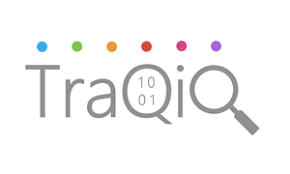Historically, we have viewed the world through a couple of lenses – a consumer lens and a business lens. So, where does an Uber driver fit it. A little bit of both worlds. The driver is both a consumer and a small business. So, what are the elements that we consider as we investigate the future?
Universal devices like Mobile phones and tablets (reduced dedicated hardware units like credit card terminals & ATM’s). Many of the local coffee shops and restaurants have made the migration. Most others will follow. The flexibility and ease of use of these devices is driving adoption. The consumers will continue to migrate more payments to phones – away from cards and towards QR codes and other contactless systems. And remember, these devices are being used to buy, sell, transact – for both the consumer role and the business.
Payment gateways and mobile wallets started the revolution. Today, cloud-based Software with API’s are connecting all the players. These software platforms must be extensible, interconnected and evolve rapidly. As we take a wholistic view of where the transaction originates (a mobile device), to where the multi-party settlement happens (in the cloud), and the triggers to the supply chain to build/deliver a product or service. The supply chain of tomorrow has employees, vendors, and an army of independent professionals who may or may not be available at any given time – so real time changes will be the norm.
Technology solutions like Blockchain offer security and transparency. These encrypted distributed ledgers will continue to provide trusted real-time verification of transactions with the need for intermediaries like correspondent banks and clearing houses.
We went from a world of passwords to two-factor authentication. Now we are gradually moving towards biometric solutions for authentication and decision. Voice, fingerprints, retina are just the beginning. Good technology innovation almost always gets noticed by bad actors who want to prey on the weak. It is likely that the biological and structural characteristics of a person will help eliminate most of that.
Social platforms altered digital payments solutions a few years ago when Venmo allowed users to transfer money and share transaction details with their social eco-system. It is unlikely that the trend will change in the near term. It is another example of multiple world’s colliding. It is not just about making digital payments. It is a newsfeed that tells you who is going to a concert, paying rent and dining out (and with whom).
Emerging markets are bringing in a couple more billion people to the connected universe. It is likely that those markets will drive the evolution of these solutions. Not just language, but social and cultural elements that will impact product design.
Smart home solutions like Amazon Dash allow one tap re-ordering. There are other sensors that automatically reorder. Similarly, as we communicate via voice with Siri, Alexa or Corona, we are driving up Voice based transactions and commerce. That trend is likely to grow. The voice authenticates, instructs and completes the transaction.
Analytics, Artificial intelligence and Machine learning. Some of these are used interchangeably. Arguably, these will have the greatest impact on digital payments in the future – starting with preventing fraud, helping businesses recommend products and services to their customers, and helping drive automated transactions. It is as simple as the Netflix or YouTube dashboard – the media recommendations that show up are clearly based on the user’s preference and history….and drive many new media purchases, all done in a seamless manner that maximizes the user’s media watching experience.
TraQiQ offers Digital payment solutions that have been in production for over 10 years. These solutions have evolved rapidly and provide great value in a socially connected world where barriers are coming down and emerging market consumers are driving change.



